When people say “Ivy League”, the image that comes to mind is Harvard, Yale, Princeton — those with perfectly manicured lawns, neo-Gothic facades, and multi-million-dollar endowments. These universities have long become symbols of academic success, intellectual elite, and even a kind of social club for the chosen few. But every year, more and more applicants — both American and international — start asking themselves: is it really necessary to aim only for those?
After all, getting into the Ivy League is incredibly difficult, studying there is expensive, and the atmosphere isn’t always comfortable. Moreover, not everyone wants to be part of an empire with thousands of students, where you sit in a lecture hall with 300 people. Some look for intimacy, others — a lively teaching environment, and some want a university where they are judged not by their last name but by their ideas.
And this is where the introduction to the New Ivy League, or Hidden Ivies, begins — universities that aren’t as well-known but offer elite education, a deep individual approach, and career prospects on par with the best of the best. These are schools whose graduates work at Google, Apple, NASA, engage in research, create startups, and become part of global intellectual communities.
These colleges and universities don’t require their students to be “the best of the best”. They help you become a better version of yourself — every day. Welcome to a different America, where prestige is not a brand, but quality.

“Ivy League isn’t a brand, it’s an approach to education. The Hidden Ivies don’t need a label to be elite.” — from the foreword to Hidden Ivies.
How the New Ivy League Emerged and Why You Should Know About It
In the early 2000s, two American educational consultants — Howard and Matthew Green — published a book with a catchy title, “Hidden Ivies”. In it, they offered the world an alternative perspective on prestigious education in the USA. According to them, public attention is overly focused on eight well-known names — Harvard, Yale, Princeton, and other Ivy League universities — while across the country there are dozens of institutions that are no less outstanding, and in some respects even superior.
Thus, the term Hidden Ivies was born — “Hidden Ivies” or the “Invisible Ivy League.” This is an unofficial group of 63 colleges and universities that combine high-quality education, outstanding faculty, vibrant student life, and strong academic reputation, yet lack the same global recognition as the Ivy League.
The authors identified several criteria to determine membership in the Hidden Ivies:
- Strong academic standards
Programs built on analytics, critical thinking, and interdisciplinarity. - Prestigious humanities and natural sciences programs
These institutions do not focus on just one field — they cultivate well-rounded graduates. - Lively and rich student environment
From theater to robotics, debates to mountain expeditions — everyone can find their niche. - Campus aesthetics and spirit
The architecture, landscaping, and atmosphere in many of these schools rival Harvard or Cornell. - High employment rates
Graduates from these schools are in demand and competitive in the global job market.
Interestingly, many of these colleges are small in size. There are no giant lecture halls or faceless streams of students. Instead, there is a warm, almost homelike atmosphere where students feel like real participants in the educational process, not just a number on a list. Professors don’t just deliver lectures — they become mentors. And this is not just a figure of speech.
Hidden Ivies are not about prestige for the sake of prestige. They are about deep, thoughtful, and quality education. About freedom of choice and academic integrity. About personal development, not just a resume.
That is why today, thousands of students, when choosing between a loud brand and true value, increasingly bet on what was once hidden. And they no longer keep this decision a secret.

Ivy League: The Aristocracy of American Education
When you hear the phrase “Ivy League”, scenes from Hollywood movies come to mind: students in vintage blazers, Victorian architecture, evergreen lawns, and professors with world-renowned names. But behind this scenery lies something more. The Ivy League is not just a group of universities; it is a whole cultural and social system rooted in American history.
- 01. Who belongs to the Ivy League?
Officially, the Ivy League consists of eight universities in the Northeastern US, united not only by academic prestige but also by their historical membership in a sports conference established in 1954:
- Harvard University (Massachusetts)
- Yale University (Connecticut)
- Princeton University (New Jersey)
- Columbia University (New York)
- University of Pennsylvania (UPenn) (Pennsylvania)
- Dartmouth College (New Hampshire)
- Cornell University (New York)
- Brown University (Rhode Island)
Each of these schools is a world-class brand. Harvard is known for law and business, Yale for theater and political science, Princeton for mathematics and philosophy. Each has its own history, style, traditions, and codes.
- 02. What distinguishes the Ivy League from the Hidden Ivies?
- Level of recognition
Ivy League universities are global brands. Their names are recognized even by those far from education. Harvard, Yale, Princeton — elite among elites. Hidden Ivies, by contrast, are often well known within the US, especially among professionals and employers, but less recognized internationally. Still, this does not affect the quality of education. - Size
Ivy League universities tend to be large: student bodies can reach 15–20 thousand, including undergraduates and graduate students. Hidden Ivies are mostly small colleges with 2–5 thousand students, allowing a more personalized approach and intimate atmosphere. - Atmosphere
The Ivy League is dominated by a spirit of competition, ambition, and fast pace. These are places where everyone strives to be first — in research, internships, and career starts. Hidden Ivies offer more individuality, comfort, and mindfulness: here, not only results matter but also the journey, attitude to knowledge, and academic freedom. - Cost and funding
Studying in the Ivy League is expensive but offset by large scholarships and endowment funds. Hidden Ivies often offer more affordable tuition while maintaining grant and financial aid systems, especially for talented students. - Mission
The main goal of the Ivy League is to cultivate leaders and influential figures in politics, science, and business. Hidden Ivies focus more on developing thinking, personal growth, and deep education, even if it doesn’t lead to a CEO position by age 30. Their aim is to shape intellectuals, not just graduates with impressive resumes.
- 03. Symbolic rivalry: prestige versus philosophy
Although there is no direct institutional conflict between the Ivy League and Hidden Ivies, rivalry exists — in the minds of students, parents, professors, and even employers. It is not always open but definitely felt.
- Ivy League graduates can pride themselves on having a diploma recognized anywhere in the world.
- Hidden Ivies graduates pride themselves on deeper knowledge, stronger connections, and a more humane approach to education.
Many Hidden Ivies — such as Williams, Amherst, or Swarthmore — year after year outperform Ivy League universities in independent rankings for teaching quality, student satisfaction, and academic environment. Yet public perception still tends to favor the “big eight,” thanks to PR, history, and global reputation.
Interestingly, in sports circles, Hidden Ivies students joke:
“The Ivy League runs faster, but we think deeper.”

Why Are More and More Students Choosing the “New Elite”?
When the familiar logos of Harvard or Columbia appear before your eyes, it’s hard to resist the temptation. But more and more students — both American and international — are consciously stepping away from the “Big Eight” and choosing lesser-known yet genuinely strong universities. Why? Let’s find out.
- 01. Individual approach, not mass production
The Ivy League is about scale. Large campuses, large lecture halls, vast resources. But along with this comes a certain impersonality. Professors might only remember the top students by their ID numbers, and personalized feedback is a luxury.
With Hidden Ivies, it’s different. Here, groups are small, and professors know students by name. You don’t get lost in the crowd — you become part of a community. Studying turns from a race into a dialogue. And according to student feedback, this is the true value of education: when you’re not just listening to lectures but growing within an intellectual environment. - 02. Financial accessibility: not just for the chosen few
Yes, everyone has heard about Harvard’s billion-dollar endowments. But that doesn’t mean getting in equals free tuition. The Ivy League offers financial aid, but it’s often tied to many conditions, and for international students, it can be a real challenge.
Hidden Ivies are different. Many colleges have need-blind admission (admission regardless of financial status) and need-based aid (assistance based on financial need). And this aid can be generous: grants, partial or full coverage of housing, meals, and books. Importantly — without hidden fees that large universities often add. - 03. An atmosphere free from snobbery and pressure
The Ivy League fosters a cult of success. It seems that if you’re not launching a startup by age 20 or interning at Goldman Sachs, you’ve already lost. This pressure wears people down, causing anxiety and burnout. Graduates from top schools talk about this more and more.
Hidden Ivies offer a different approach. Here, the journey matters more than the result, development more than competition. You can excel in biology, perform in theater, volunteer, and simply live — and no one will criticize you for not grinding 24/7.
This doesn’t mean it’s easy here. But the pressure is academic, not social. For many, it’s a breath of fresh air. - 04. Flexibility and innovation instead of bureaucracy
Large universities often resemble ocean liners — slow to turn and slow to adopt new things. Hidden Ivies move at a completely different pace. New programs appear quickly, and modern technologies and approaches are easily implemented. For example:
- AI and machine learning labs have long been active;
- Sustainable practices are actively implemented — from “green” campuses to waste recycling;
- Hybrid and interdisciplinary courses are introduced: philosophy + programming, biology + art, and so on.
Students don’t just follow trends — they participate in shaping them. And this gives a real sense of belonging.
The Best of the Unseen: Stars of the New Ivy League
Hidden Ivies are not just “second-tier” schools. They are true academic gems, each with its own character, traditions, and strengths. Here, you’re not taught to be like everyone else — you’re helped to discover yourself.
Below are ten of the most prominent representatives of the New Ivy League, ones to watch especially closely.
- 01. Williams College (Massachusetts)
- Specialization: humanities, economics
- Fact: multiple leader of the U.S. News ranking for teaching quality among liberal arts colleges
Williams is the quintessence of the intellectual American college. Here you find classic architecture, green hills, and small class groups. Professors are not just lecturers but collaborators. Every student is a participant, not an observer.
- 02. Amherst College (Massachusetts)
- Specialization: liberal arts, interdisciplinary programs
- Fact: home to one of the country’s most respected writing programs
Amherst is about freedom. There is no mandatory curriculum: the student designs their own path. It may sound daunting, but this is where the most original thinkers are born. Studying here is an experiment, where the teacher guides rather than dictates.
- 03. Swarthmore College (Pennsylvania)
- Specialization: engineering and social sciences
- Fact: one of the few liberal arts colleges with a full engineering program
Swarthmore stands for rigor and depth. There is a strong focus on analysis, argumentation, and reflection. The academic load is heavy, but that attracts the most motivated students. This college is for those unafraid to truly think.
- 04. Pomona College (California)
- Specialization: interdisciplinary sciences, biology, international relations
- Fact: part of the Claremont Colleges consortium — students can take courses at 6 neighboring colleges
Pomona combines the California climate with Harvard-level discipline. Flexibility in learning, strong resources, and access to a wide professor base through the Claremont consortium make Pomona a unique place to start in any field.
- 05. Davidson College (North Carolina)
- Specialization: political science, international relations
- Fact: one of the most ethical colleges in the country — strict honor code in place
Davidson is famous for its moral compass. Cheating is frowned upon, and respect for professors is part of the culture. Graduates often go into NGOs, diplomacy, analytics, and international agencies.
- 06. Haverford College (Pennsylvania)
- Specialization: sociology, philosophy, biology
- Fact: student self-government is not a formality but real power
Haverford is a place where students genuinely run their college. A culture of discussion, respect for opinions, and academic honesty is actively developed here. It’s a mini-model of a future society ruled by conscience, not rankings.
- 07. Wesleyan University (Connecticut)
- Specialization: film, music, digital media, sciences
- Fact: the creators of the Silicon Valley series studied here
Wesleyan is a breath of creativity in the world of academia. It has strong film, music, and digital arts programs. The university constantly experiments with formats and approaches. A real find for those who want to think outside the box.
- 08. Bowdoin College (Maine)
- Specialization: ecology, history, politics
- Fact: one of the few colleges with an Arctic Studies program
Bowdoin is nature, exploration, and northern spirit. The campus is near the coast, and students participate in real polar expeditions. Here, you’re taught not just to read books but to live knowledge.
- 09. Colgate University (New York)
- Specialization: economics, international business, sports
- Fact: campus is one of the most beautiful in the USA, located on picturesque hills
Colgate balances intellect and activity perfectly. Sports are respected but never at the expense of academics. It’s a place where you can be a team captain and still study neuroeconomics.
- 10. Middlebury College (Vermont)
- Specialization: foreign languages, international studies
- Fact: leader in language studies, including Chinese, Arabic, Farsi, and Hebrew
Middlebury is a gateway to the world. Culture, context, and understanding the “other” are valued here. Students spend semesters abroad, immerse themselves in cultural studies, and work with diplomatic missions.
Interesting fact: Williams and Amherst are not just neighbors but historic rivals. Their annual football game is called The Biggest Little Game in America. For these colleges, it’s more than a game — it’s a spirit of tradition, pride, and academic honor.

How to Build a Good Credit History in the USA
Hidden Gems of the Sunshine State: Hidden Ivies in Florida
When we talk about Florida, beaches of Miami, orange groves, and amusement parks of Orlando come to mind. But few know that this sunny state can boast not only resorts but also high-level universities that rightfully belong to the so-called category of Hidden Ivies. Here, warmth is felt not only in the climate but also in the attitude towards students.
Let’s get acquainted with the best universities and colleges in Florida that combine prestigious education, an intimate atmosphere, and strong academic programs.
- 01. Rollins College (Winter Park, a suburb of Orlando)
The most "classic" Hidden Ivy in Florida
Rollins is one of the oldest and most respected liberal arts colleges in the southern USA. It consistently ranks high in U.S. News & World Report rankings and is listed among the top liberal arts colleges in the country. Why it’s worth attention:
- Ideal student-to-faculty ratio: 10:1.
- Campus right on the shore of the picturesque Lake Virginia.
- Strong programs in international relations, business, psychology, and humanities.
- Well-developed network of international exchanges and internships.
- Mild climate — greenery, sunshine, and kayaking breaks throughout the year.
Interesting fact: Fred Rogers, the legendary TV host and a symbol of kindness and humanity in American culture, studied at Rollins. An entire building on campus is named after him.
- 02. Eckerd College (St. Petersburg)
Innovation, ecology, and freedom of choice
This private college on the coast of Tampa Bay is known for its student-centered approach. Eckerd is an ideal choice for those who want to combine intellectual growth with social responsibility and studying nature. What makes it special:
- Programs in marine biology, ecology, international relations, and literature.
- A unique course, "Autobiography of the Self," for all freshmen — helping them better understand themselves and their goals.
- Classical liberal arts foundation + practical learning: participation in real ecological projects.
- Living in environmentally sustainable campuses right by the bay.
Eckerd is one of the few colleges where students can “adopt” a dog from a shelter and care for it in the dormitory. This is part of their "Pet Life" program — emphasizing empathy, responsibility, and warmth.
- 03. Stetson University (Deland)
A law school with character and a Harvard-style campus
Founded in 1883, Stetson is the oldest private university in Florida. It offers a rich academic spectrum but is especially strong in law, business, arts, and ecology. Why it’s on the Hidden Ivies list:
- Stetson Law School ranks among the top in the US for training practitioners.
- Wide range of programs: from economics and music to biomedical sciences and ecology.
- A campus in the Colonial Renaissance style, surrounded by greenery.
- Individual approach and scholarships for international students.
- Active cultural life: theaters, student radio, debate clubs.
Stetson was one of the first universities in Florida to officially ban plastic bottles on campus.
- 04. University of Miami — Honors College (Miami)
Public Ivy + personal approach
Although the University of Miami is a research university, it offers an Honors College — a program for academically strong students with separate courses, faculties, professors, and privileges. Why consider it:
- Individual research with professors starting from the first year.
- Special seminars, internships, participation in international conferences.
- Support for admission to graduate and medical schools.
- Excellent infrastructure: from labs to a campus with a pool, restaurants, and gyms.
- Unique climate: studying under palm trees near the Atlantic Ocean.
- 05. New College of Florida (Sarasota)
Academic freedom, philosophy, and intellect under the sun
New College of Florida is a public college, but in spirit and structure it is closer to elite liberal arts schools. It is often called an "intellectual haven" for students who want not just to study but to understand, explore, question, and debate. It is one of the smallest and most intimate institutions in the entire US public education system — and this is what makes it unique. What makes it a Hidden Ivy:
- No traditional grades — instead, students receive written evaluations from professors.
- Flexible curriculum — students can design their own educational path.
- Focus on research: every graduate is required to prepare their own thesis.
- High acceptance rate into Ivy League graduate programs.
- Campus on the shore of the Gulf of Mexico — a library with a view of the water, classes outdoors.
Interesting fact: despite its tiny size (about 700 students), New College ranks high in the number of graduates awarded Fulbright and NSF scholarships.
What unites these institutions?
- High academic standards;
- Individual approach to each student;
- Beautiful, well-maintained campuses with character;
- Strong humanities and natural sciences programs;
- Generous scholarships and aid programs;
- Warm, friendly learning atmosphere.
Florida is not only about resorts but also a world-class educational environment where Hidden Ivies grow among palms and Spanish moss. These institutions are the choice for those who want to combine intellectual depth, comfort, ecology, and a humane approach to education.
If you are looking for a worthy alternative to the Ivy League but want more sun, life, and freedom — Florida’s Hidden Ivies could be your perfect path.

Not Just the Ivy League: Who Are the Little, Public, and Southern Ivies?
When people talk about elite American education, the usual names come to mind: Harvard, Yale, Princeton. But beyond the “Big Eight” there exists a whole system of unofficial rankings and informal groups — each with its own legends, traditions, and networks of alumni. These are commonly called Little Ivies, Public Ivies, and Southern Ivies. Let’s break down who is who.
- 01. Little Ivies: intellect in miniature
Little Ivies are small private liberal arts colleges mostly located in the Northeastern US. They are not lower in quality, just smaller in size. Typically, only 2–3 thousand students study there, but each receives almost individual attention. It’s like a boutique version of the Ivy League.
The Little Ivies colleges belong to the informal group “Little Three” (Amherst, Wesleyan, Williams) and/or the NESCAC athletic conference, which includes many of them. They are famous for academic freedom, intensive programs in literature, philosophy, biology, and focus on developing critical thinking. Examples:
- Bates College (Maine)
Environmental education, activism, student self-government. - Colby College (Maine)
Innovations in teaching, partnerships with major museums and foundations. - Connecticut College (Connecticut)
Strong interdisciplinary programs and cultural inclusiveness.
If Ivy League is a Michelin-starred dinner for 100 guests, Little Ivies is an intimate dinner with a signature chef.
- 02. Public Ivies: elite with a public address
The term Public Ivies appeared in 1985 thanks to Richard Moll’s book, which described state universities offering Ivy League quality at a lower cost. They are funded by taxes, so tuition is cheaper for in-state residents, and the scale is much larger.
Public Ivies are often real academic cities: dozens of faculties, thousands of professors, hundreds of research labs. Yet the level of competition, faculty, and development opportunities rival Princeton or Columbia. Examples:
- University of Michigan (Ann Arbor)
One of the world’s best research universities. - University of Virginia
Founded by Thomas Jefferson, a leader in political science and law. - UC Berkeley (California)
Legendary school of computer science and business, birthplace of many startups.
Public Ivies often become the golden mean for students: elite education + affordable price + rich infrastructure.
- 03. Southern Ivies: prestige with an accent and southern sun
Southern Ivies is a term associated with elite universities in the southern US that combine high academic standards, elegant campus style, and warm climate. These schools are often underrated, as many think quality education is concentrated in the Northeast. But statistics show the opposite: Southern Ivies produce top graduates and regularly rank in the national top 25. Examples:
- Rice University (Texas)
Top engineering and architecture school, campus with a science park. - Vanderbilt University (Tennessee)
Strong medical programs and business school. - Emory University (Georgia)
Prestige in medicine, biology, global studies.
Spiritually, Southern Ivies are like Harvard in shorts and with an accent — a combination of intellectual rigor and cultural charm.
To sum up:
- Little Ivies — for those seeking intimacy and a personal approach.
- Public Ivies — a pragmatic choice: prestige + reasonable price.
- Southern Ivies — for those wanting intellectual growth without climatic hardships.
American education is multifaceted. And perhaps, beyond the Ivy League, there awaits a campus where you will be understood, supported, and taught not only a profession but also life.

How to Get into the Hidden Ivies: Secrets to Success Beyond the Rankings
Applying to universities from the Hidden Ivies is not just about scores and documents. It’s a process where not only academic success matters but also your personality, life experience, and desire to stand out. If you dream of becoming part of this special community, here’s what you need to know and consider.
- 01. Great grades matter, but they’re not everything
Of course, a high GPA and strong standardized test scores form the foundation. But Hidden Ivies look beyond the numbers. They want to understand who you are behind the stats. What’s your story? What challenges have you overcome? What inspires you?
The key here is motivation — the inner spark driving you forward. It might be a love for biology, a passion for social justice, or a desire to change the world through art. - 02. A compelling essay — tell your story honestly
Your personal story is the key to the admissions committee’s heart. The essay shouldn’t just recount facts but show your character, values, dreams, and challenges you’ve faced.
Ask yourself: What makes me unique? Why do I want to study here? How does my experience differ from thousands of others?
Avoid clichés and templates. Instead of “I love learning,” tell a specific story illustrating your drive for knowledge. - 03. Extracurriculars — show your multifaceted self
Hidden Ivies value students who live vibrantly and fully. Volunteering, sports, music, research — all these show you can manage your time, work in teams, and have hobbies that develop you as a person.
It’s not about quantity, but depth of involvement. It’s better to be a leader in one club than a nominal member of ten. - 04. Recommendations — more than just formality
Letters from teachers should speak not only about your knowledge but also about the kind of person you are. The ideal recommender knows you personally and can provide examples of your perseverance, leadership, and kindness.
Tip: Connect with teachers early, participate in their projects, so they can see your motivation and talents. - 05. Interviews — a chance to show yourself live
Some Hidden Ivies conduct interviews — in person or online. This is your chance to explain why you chose this university, ask questions, and leave a vivid impression.
Don’t be afraid — it’s a conversation, not an exam. Prepare, think about what you want to say about yourself, and be genuine. - 06. Insider tip: choose a university that fits your soul
Hidden Ivies are not just about rankings and programs. They are unique communities, each with its own “soul,” atmosphere, and traditions. Visit campuses, talk to students, read forums. Don’t pick just the “coolest” university, pick the one where you will feel comfortable and engaged. After all, education is not about the diploma, but about the journey you take.
Following these tips, you won’t just get into the Hidden Ivies but become a full-fledged member, unlock your potential, and build the career you dream of.

Hidden Ivies by the Numbers: What It Costs to Join the Elite and What to Expect Afterwards
When talking about universities from the Hidden Ivies, it’s important not only to know their names but also to understand how the admission process works, the level of preparation required, and what awaits graduates. Here are the key numbers that will help you gauge the scale and opportunities of the Hidden Ivies.
- 01. Acceptance rate: from 9% to 30% — competition for a spot
Competition at Hidden Ivies is serious, but it varies depending on the institution. The most popular and prestigious colleges accept only about 9% of applicants — a rate comparable to elite Ivy League schools. At the same time, some colleges with a more open admission system allow up to 30% of applications.
This means it’s possible to get in — but you need to be well-prepared and stand out. There are almost no random candidates, and the admission process is a real challenge for the most motivated. - 02. Average SAT score: 1350–1550 — a serious academic level
The average SAT scores for applicants to Hidden Ivies range from 1350 to 1550 out of 1600. This indicates that truly smart and well-prepared students study here.
For comparison, the average SAT score in the US is about 1050. This means the competition is high, and studying requires diligence and focus. - 03. Tuition cost: $50,000–$70,000 per year — but with generous grants
Education at Hidden Ivies is expensive but simultaneously accessible. The cost of annual tuition, housing, and meals often reaches $50,000–$70,000. However, it’s important to understand that most students receive grants and scholarships that can reduce this amount to less than $20,000 per year.
Universities benefit from attracting talented students regardless of their financial situation, so financial aid systems are one of the strong points of Hidden Ivies. - 04. Student-to-faculty ratio: 7:1 — maximum attention
One of the main advantages of Hidden Ivies is small class sizes and individual attention. The student-to-faculty ratio is usually about 7 to 1. This means everyone has the opportunity not only to ask questions but also to receive personal recommendations and support.
This format promotes deep immersion in the material and development of critical thinking. - 05. Career prospects: 90% of graduates find a job or continue their studies within 6 months
One of the most impressive statistics — over 90% of Hidden Ivies graduates either start their professional careers or continue their education in graduate or doctoral programs within the first six months after graduation.
This is evidence that education here is not only prestigious but also practically effective — students graduate prepared for the challenges of the job market and academic environment.
Hidden Ivies combine high competition, serious academic standards, and at the same time individual approach and generous student support. If you are ready for a challenge and want to study in an environment where everyone matters, these universities are an excellent choice.
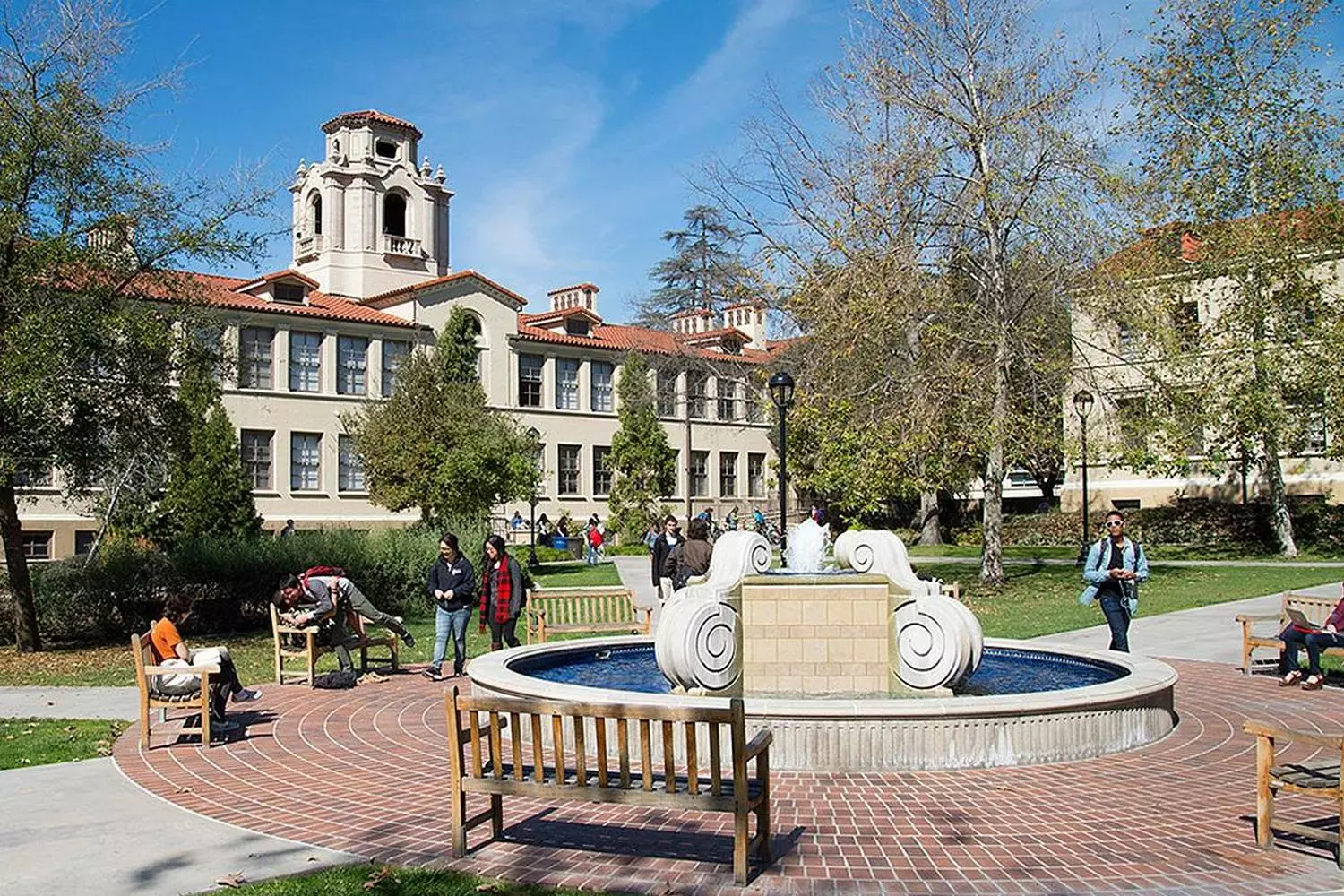
Who the New Ivy League Is Really For: Unexpected Benefits and Values
The New Ivy League is not just an alternative to the famous Ivy League. It offers a unique educational experience that is ideal not for everyone, but specifically for those seeking something beyond just a prestigious diploma. Let’s take a closer look at who should pay attention to the Hidden Ivies and why.
- 01. For those looking for a balance between academics and humanity
At large universities, there is often a sense of detachment: you become just a number in the system, part of a huge mechanism. Hidden Ivies create and maintain an atmosphere where not only a high level of knowledge matters, but also respect for the student as a person. They value dialogue and genuine interaction, where you can ask questions, get advice, and feel supported.
This is a place for those who want not only to study but also to grow as individuals, feeling connected with professors and classmates. - 02. For those who don’t want to be “just one of a thousand”
In the Ivy League and other large universities, some programs have hundreds or even thousands of students. Sometimes it’s difficult to stand out when you are just a face in a large crowd. Hidden Ivies focus on small groups and individual attention. If you value being known by name, having your strengths and weaknesses acknowledged — not just receiving a grade — then the New Ivy League is just for you. - 03. For those who value teaching, not just the diploma
Yes, a diploma from a renowned university opens doors. But Hidden Ivies prioritize the quality of education. Professors here are not just teachers but mentors and researchers who are passionate about their field and ready to involve students in the scientific process. If it’s important for you not just to complete courses but to understand and love the subject, to find inspiration — this is where it’s possible. - 04. For those ready for a serious intellectual challenge
Hidden Ivies are known for their high academic standards. This is not an easy path — on the contrary, they expect diligence, independence, and critical thinking skills. If you enjoy challenges and want to truly grow professionally and intellectually, these universities will offer everything you need — and even more. - 05. For those who want elite education without an overheated brand
Not everyone needs the fame and hype surrounding the Ivy League. For many, atmosphere, quality, and the ability to focus on studies rather than status are more important. Hidden Ivies offer exactly this balance: elite-level preparation, recognition by employers and alumni, but without excessive noise around the name.
If you are looking for something special — education that combines depth, attention to the individual, and real opportunities, not just brand glamour — the New Ivy League could be your perfect choice. These universities are for those who value quality and humanity in education.
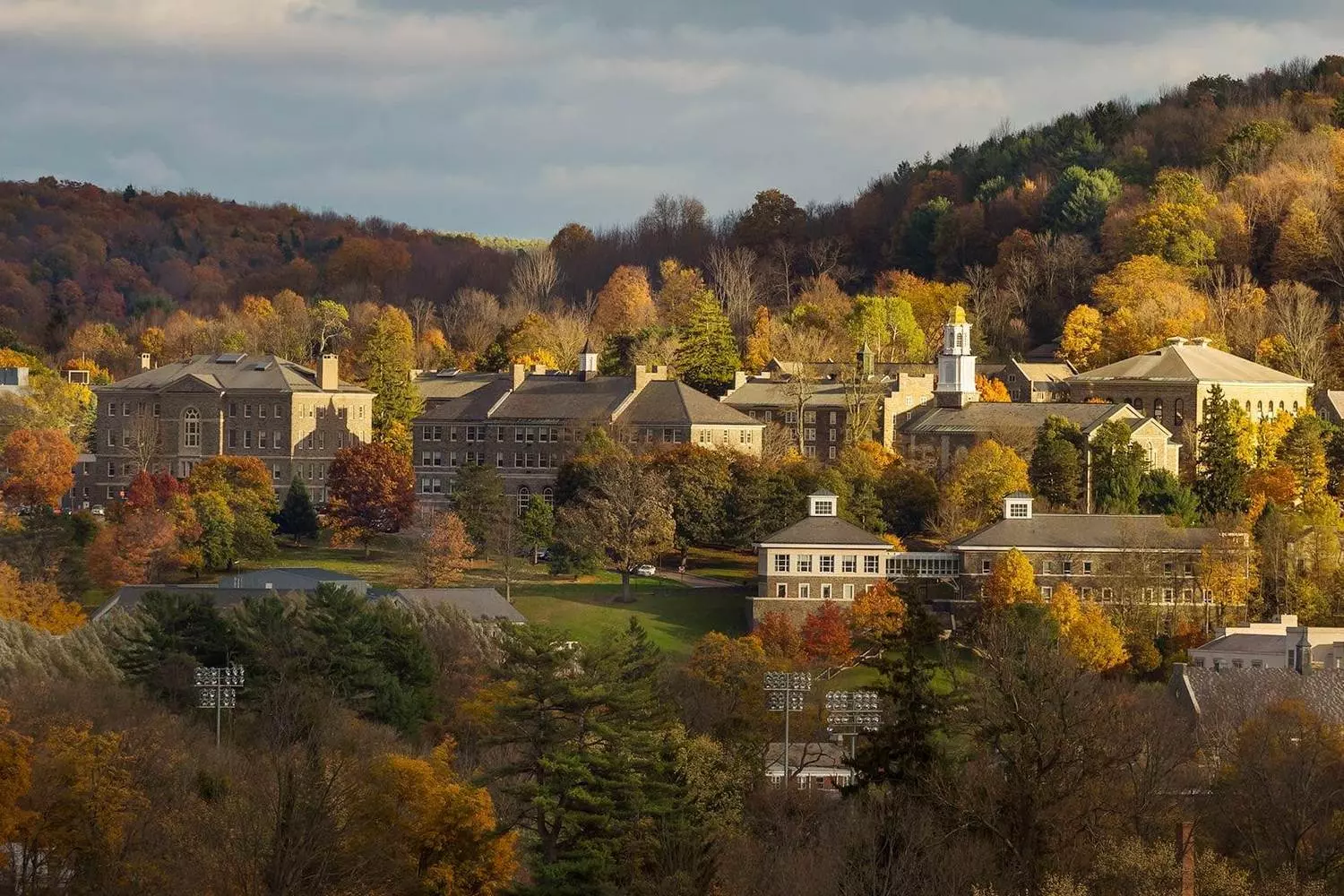
New Ivies: 20 Amazing Facts About Schools That Challenged the Classic Ivy League
The traditional Ivy League is a symbol of elite education, but in its shadow, a new wave of universities is rising — equally prestigious, innovative, and promising for careers. The “New Ivies” are institutions where technological breakthroughs, political leaders, and Hollywood stars are born. They’re younger, yet already rewriting the rules of academic success. Here are 20 facts that will surprise you!
- 01. Rice University: “Harvard of Texas” with space ambitions
Despite its modest size (only 8,000 students), Rice University is a key partner of NASA. Technologies for Mars missions are developed here, and its campus is located in Houston’s Museum District, where science meets art. - 02. Vanderbilt University: Education without borders
The university offers 100% tuition coverage for families earning up to $150K per year. Foreign students also have access to grants — though competition is fierce, with an acceptance rate of just 6.7%. - 03. University of Notre Dame: Catholic crucible of Nobel laureates
Over 50% of students here participate in scientific research. The campus also features a 132-meter golden mosaic of “Christ the Teacher” — one of the largest in the world. - 04. University of Michigan: Where Olympic champions are born
Sports are part of the DNA here: students have won over 500 Olympic medals. The university also ranks among the top three public universities in the US, competing with Berkeley. - 05. Georgetown University: The “Diplomatic Headquarters” of the USA
Thanks to its location in Washington, D.C., students intern at the White House and State Department. Alumni — including Bill Clinton — often become ambassadors or senators. - 06. Duke University: “The Medical Bell King”
Duke houses the world’s largest private medical center, with over 2 million patient visits annually. It’s also where the first vaccine against Ebola fever was developed. - 07. Northwestern University: Where they teach you to “sell dreams”
Home to the legendary Kellogg School of Management — a global leader in marketing. Kellogg alumni created concepts like “emotional branding” and “storytelling in advertising.” - 08. Tufts University: The university that feeds the world
Tufts owns a research farm developing new sustainable agriculture methods. Their projects are already helping to fight hunger in Africa and Asia. - 09. Emory University: “Superhero lab”
Emory develops cutting-edge cancer treatments. It also hosts the Centers for Disease Control and Prevention (CDC), where students work on real epidemiological threats. - 10. Washington University: “Nobel laureate factory”
Over the last 20 years, 24 Nobel laureates have worked here. The university excels in economics and medicine — every fifth medical school graduate becomes a clinic director. - 11. Boston College: “Billionaire forge”
Research shows BC alumni have founded more “unicorn companies” (startups valued at $1 billion+) than any other New Ivy university. - 13. Georgia Tech: The underground science city
Under the campus lies a 5 km network of tunnels housing secret labs developing military technologies. Students joke it’s the “American Schiffolan” (a nod to the Swiss Federal Institute of Technology). - 14. NYU: The invisible university
NYU has no traditional campus — its buildings are scattered throughout Manhattan. Some academic buildings hide inside ordinary office centers, and the most unusual one is located... in a former power plant! - 15. University of Chicago: Doomsday laboratory
In Chicago is the “quietest place on Earth” — an acoustic chamber absorbing 99.9% of sound. Scientists use it for experiments, and students test how long a person can endure complete silence (record: 45 minutes). - 16. Purdue University: The space elevator
The university is building an experimental model of a space elevator — a device that in the future could deliver cargo to orbit without rockets. The prototype is already undergoing tests! - 17. University of Maryland: The robot farm
The campus has an experimental farm where robots do all the work — from planting to harvesting. Students call it the “Silicon Valley of agriculture.” - 18. University of Rochester: The optical revolution
This university invented the world’s first digital camera. Today, they’re developing technology to see through walls — funded by the US Department of Defense. - 19.Boston University: Film studio under a dome
On the roof of the main building is a huge dome with state-of-the-art film shooting equipment. Special effects for “Interstellar” and “Dune” were tested here. - 20. University of California: The underwater laboratory
In San Diego there is a unique underwater research center where students live for weeks studying the ocean depths. It’s the only place like this in the world!
The New Ivy League isn’t just the “younger siblings” of Harvard and Yale. These universities are already shaping the future of science, business, and technology today. And who knows — maybe in a few decades they’ll become the new symbols of elite education!
P.S. Did you know some New Ivies offer scholarships that cover not only tuition but also… travel? Now that’s a level!
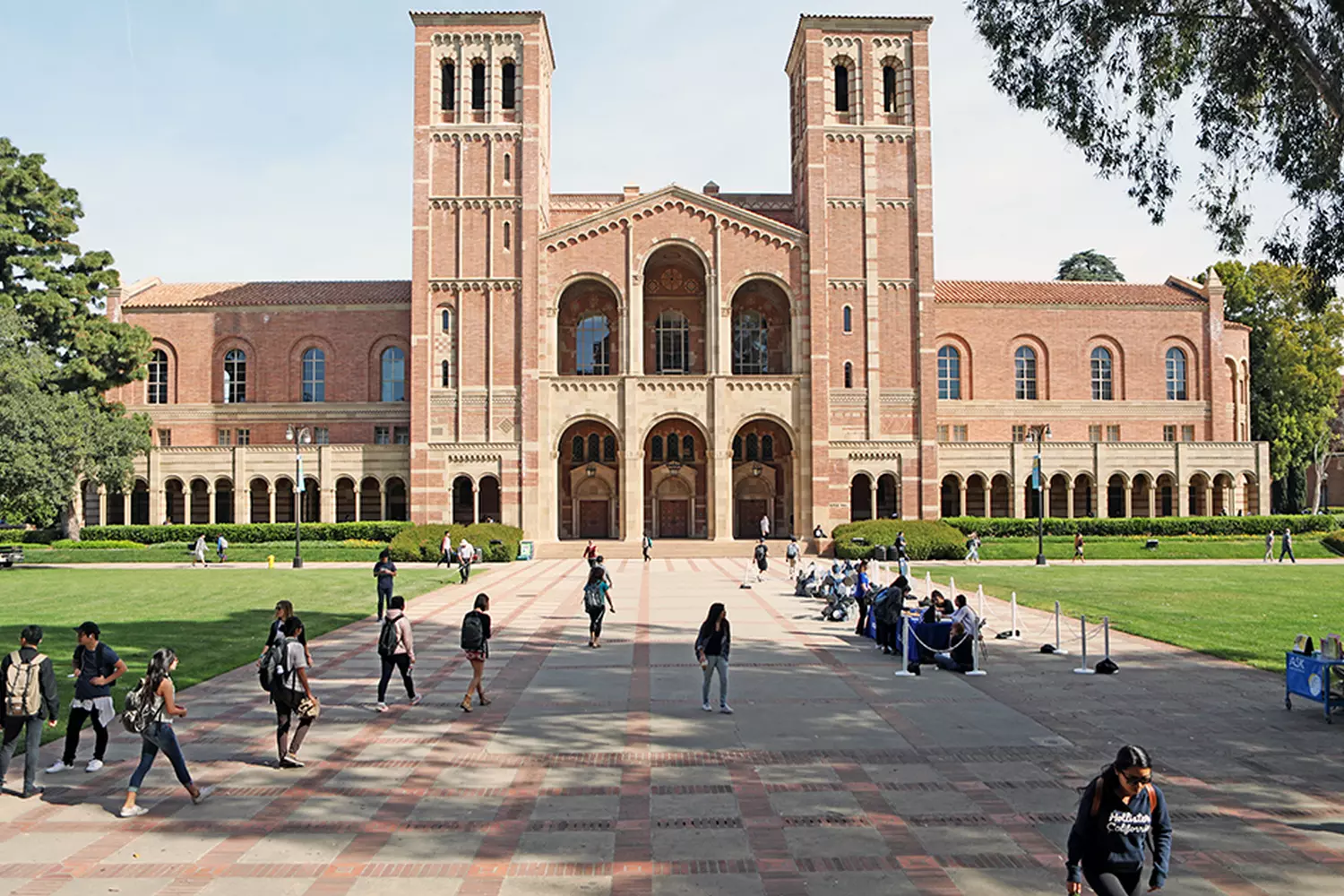
American Butler: Your Guide to the World of Elite Education
Education is not just prestige on paper; it’s about the environment, the people, the atmosphere, challenges, and discoveries. The New Ivy League offers a chance to get everything that the Ivy League is praised for, but without excessive pressure and clichés. It’s a choice for those who think independently.
Planning to study in the USA but don’t know where to start? American Butler:
- Will help you find a university that matches your profile and interests;
- Will assist with admission, visa, and housing;
- Will support you at every step — from the first email to moving into the campus.
The New Ivy League is closer than it seems. The main thing is to start.



























